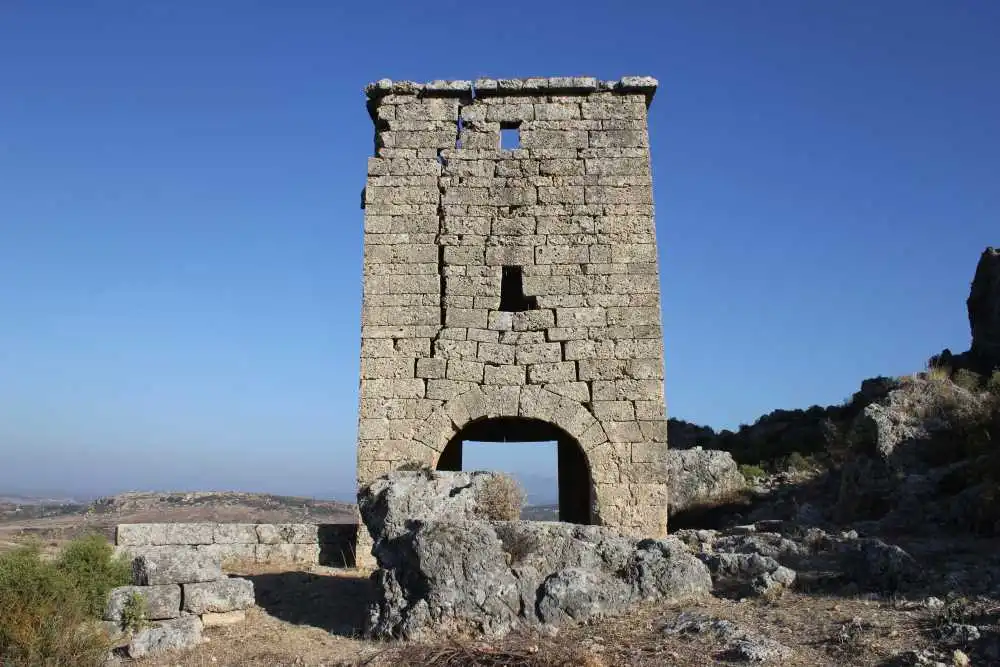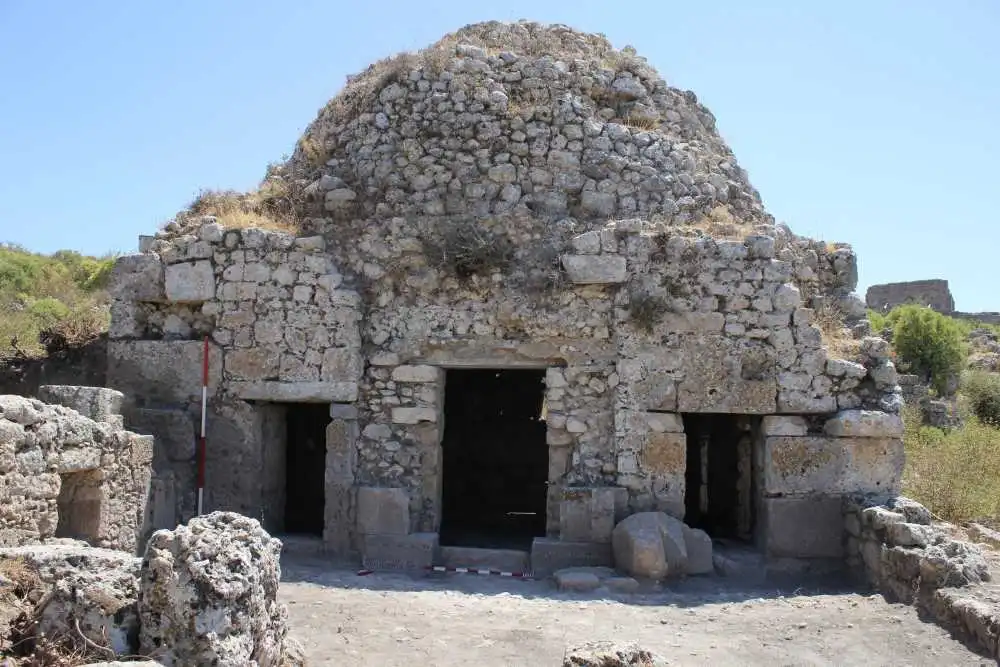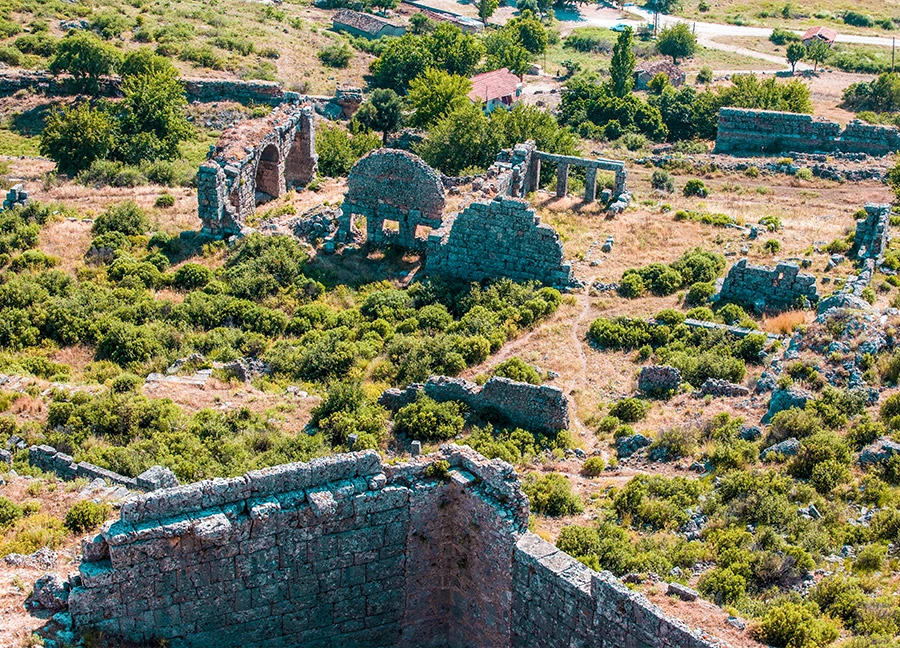Sillyon Ancient City
Description
Sillyon is located in the Pamphylia Region in the Ancient Period and today in the Kocagözler Mevkii of the Yanköy Neighborhood of the Serik district of Antalya province. It is an accepted opinion that the name Sillyon derives from Šalluša mentioned in Hittite texts and is not a Greek name.
During the Persian rule in Anatolia, the region of Pamphylia, where Sillyon is located, was also under Persian rule and this situation lasted until the time of Alexander the Great. During this period, Sillyon, with its fortified structure, became the epicenter where the Persian navy and garrison troops gathered. The ancient writer Arrianus tells that Alexander the Great came to Pamphylia in 334 BC and besieged Sillyon with a unit of his army, but could not take it. After Alexander the Great, archaeological data about Sillyon increased during the Hellenistic Period and it is understood from these finds that Sillyon now shows a city character. By the late 4th century BC, Sillyon is a strong and autonomous city that mints coins.
During the Roman Imperial Period, Sillyon expanded and became a large city, and during this period, the philanthropist Menodora, one of the prominent wealthy families of the city, made large donations for the city. With the help of Menodora, many religious and public buildings were built in the city and the city became magnificent.
Sillyon was a bishopric center in Byzantine Pamphylia and maintained this status for a long time. It is known that two patriarchs named Konstantinos and Antonius served from Sillyon. In addition, the fact that Sillyon has an important place in the region in terms of Christian history is also understood from the mention of the city's bishops in different meetings and councils. The names of Neon of Sillyon at the Council of Chalcedon and Plusianus of Sillyon at the Council of Constantinople are mentioned.
Sillyon hosted some historical developments as Karahisar-i Teke Castle, one of the important centers of Teke province during the Turkish-Islamic Period, and was inhabited until the 17th century. The Kale Masjid, located at the northwest point of the Sillyon acropolis, is the greatest evidence of the Turkish-Islamic presence in the city. This structure is among the earliest Turkish-Islamic artifacts in the Antalya Region.
Sillyon stands out as one of the rare ancient cities in Anatolia that can present the traces of all historical periods in the same frame. The fact that the hilly area where the city was founded consists of a large rock mass has increased the strength of the structures and ensured that many buildings have survived to the present day. The Main City Gate is located at the southwestern foot of the acropolis and at the beginning of the Ramped Street leading to the acropolis. Five towers were built on the walls of the lower city and four towers in different plans for the defense of the acropolis. The Hellenistic Tower in the Lower City is preserved up to the roof level.
There is a gate on the ground floor of the three-storey tower and this gate provides a secondary entrance to the city.
The stadium is located on the western slope of the city. Sillyon stadium is the largest stadium of the Pamphylia Region with a length of 254 meters. To the east of the stadium is the Roman Bath. According to the existing plan scheme of the Roman Bath, it is understood that it consists of five halls in a row. The building was used until the Late Antique Period.
Castron is located on the western part of the acropolis. Inside the castron there is a praitorion leaning against the north wall. The surviving walls of the castron have battlements. The castron functioned as the palace of the commander or the administrative center building. It is believed that the castron was built immediately after the city was moved to the acropolis during the Byzantine Period and continued to be used as a pavilion during the Turkish-Islamic Period.
Churches A and B are located in the center of the acropolis. Sillyon Theater is located in the southern part of the acropolis. The theater has a magnificent view of the Pamphylian Plain and the Mediterranean Sea. As a result of earthquakes and landslides, the stage building and some of the seating steps of the theater were destroyed. Currently, only 12 seating steps and the west wall have survived. To the south of the city acropolis is the Terrace of Temples. There are magnificent temples on two different terraces separated by stairs.
The city is a special city that presents the historical processes from the Ancient Period to the present day together with its very magnificent buildings. The fact that almost all the buildings are still standing offers a unique sightseeing experience in the city and allows us to fully understand the ancient city.
Short Description
Sillyon is located in the Pamphylia Region in the Ancient Period and today in the Kocagözler Mevkii of the Yanköy Neighborhood of the Serik district of Antalya province. It is an accepted opinion that the name Sillyon derives from Šalluša mentioned in Hittite texts and is not a Greek name.





